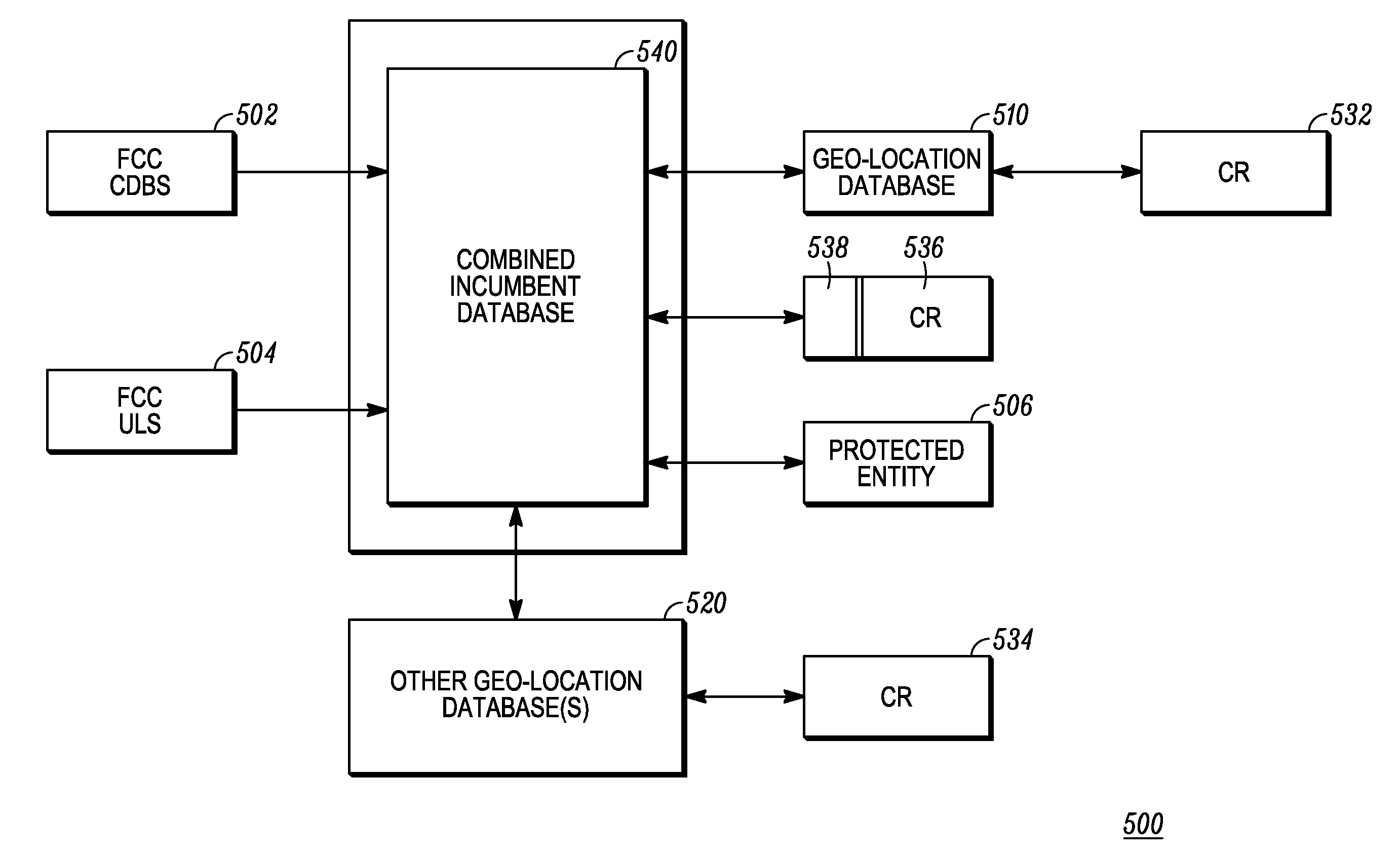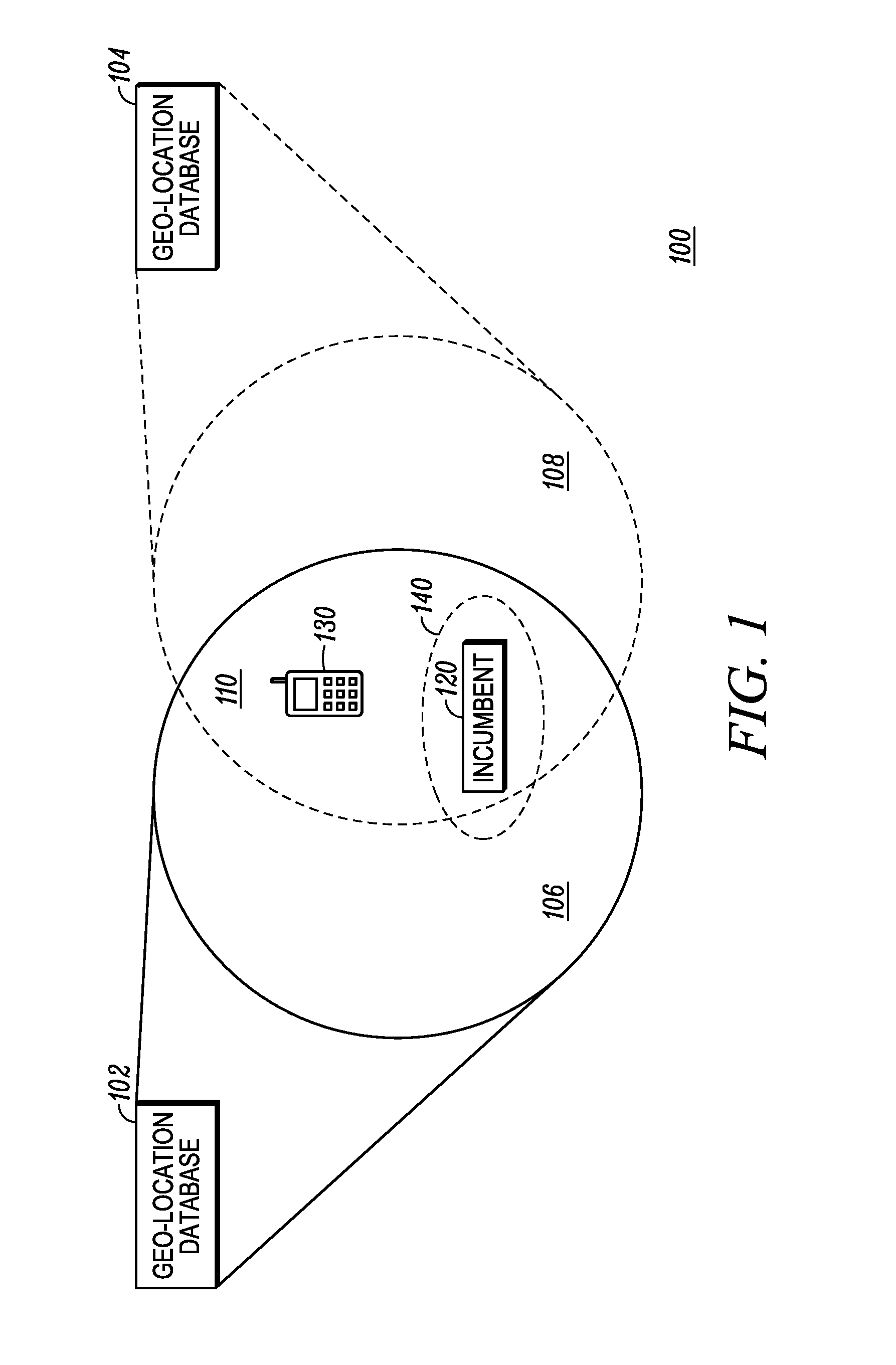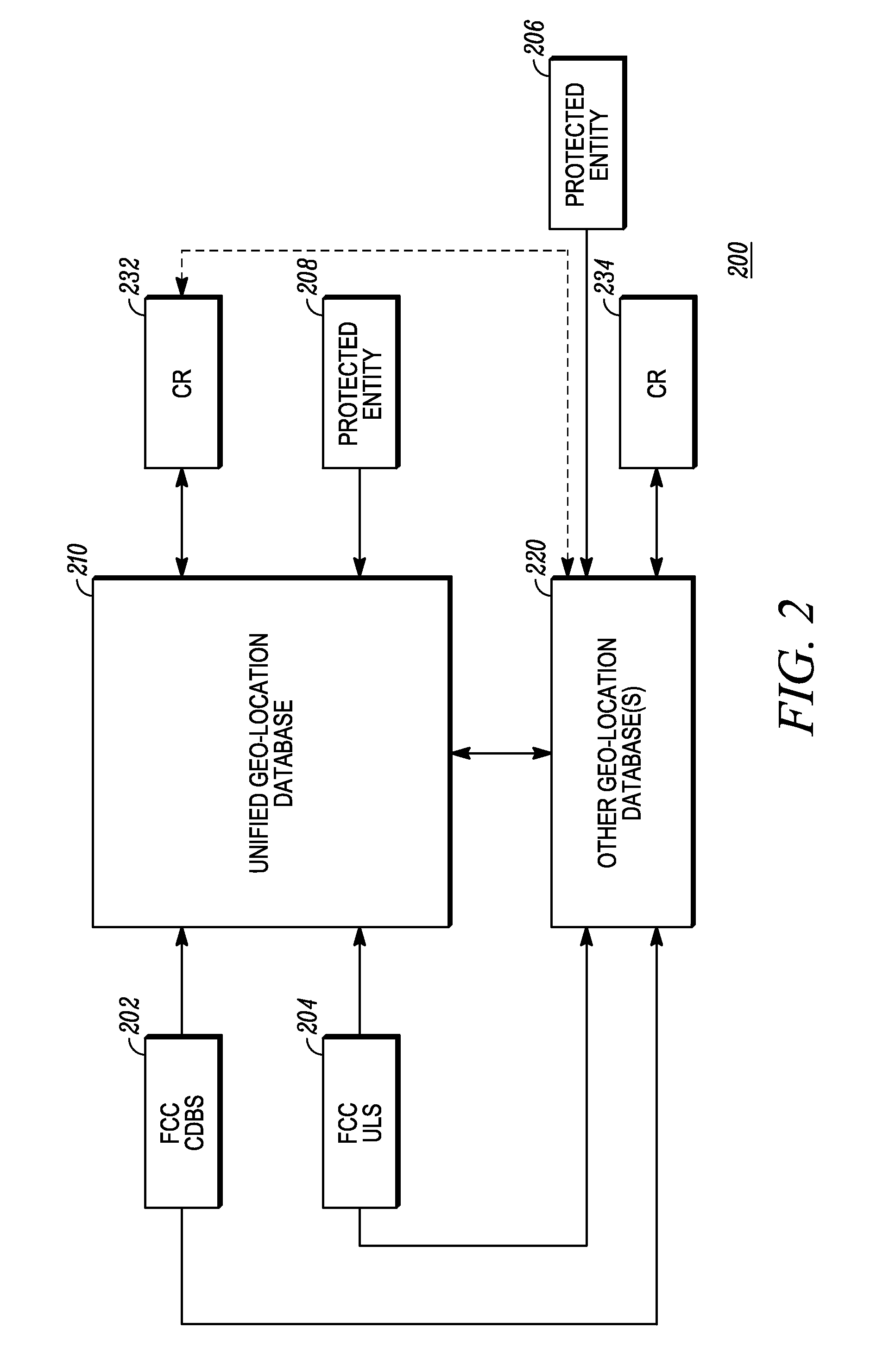Method and apparatus for automatically ensuring consistency among multiple spectrum databases
a technology of automatic assurance and database, applied in the field of cognitive radio communication systems, can solve the problems of large number of steps and computations, inconsistent incumbent protection, and inability to automatically ensure etc., and achieve the effect of ensuring consistency between multiple spectrum databases, inadvertently or deliberately corrupting geo-location data or algorithms during operation
- Summary
- Abstract
- Description
- Claims
- Application Information
AI Technical Summary
Benefits of technology
Problems solved by technology
Method used
Image
Examples
Embodiment Construction
[0021]Before describing in detail the various embodiments, it should be observed that such embodiments reside primarily in combinations of method steps and apparatus components to assure accurate and consistent channel availability results, which are essentially independent of the geo-location database queried. The comparison is automatic and takes into account spatial and temporal consistency issues between the databases, whose results are independently derived, allowing small discrepancies to exist while retaining overall consistency. The comparison permits protected users to remain protected from excessive interference caused by secondary devices accessing the frequency spectrum.
[0022]FIG. 1 illustrates one embodiment of a communication system 100 with multiple geo-location databases 102, 104 that cover overlapping geographical areas 106, 108. Within the geographical areas 106, 108 lie one or more incumbent systems (illustrated as incumbent device 120) to be protected and unlicen...
PUM
 Login to View More
Login to View More Abstract
Description
Claims
Application Information
 Login to View More
Login to View More - R&D
- Intellectual Property
- Life Sciences
- Materials
- Tech Scout
- Unparalleled Data Quality
- Higher Quality Content
- 60% Fewer Hallucinations
Browse by: Latest US Patents, China's latest patents, Technical Efficacy Thesaurus, Application Domain, Technology Topic, Popular Technical Reports.
© 2025 PatSnap. All rights reserved.Legal|Privacy policy|Modern Slavery Act Transparency Statement|Sitemap|About US| Contact US: help@patsnap.com



